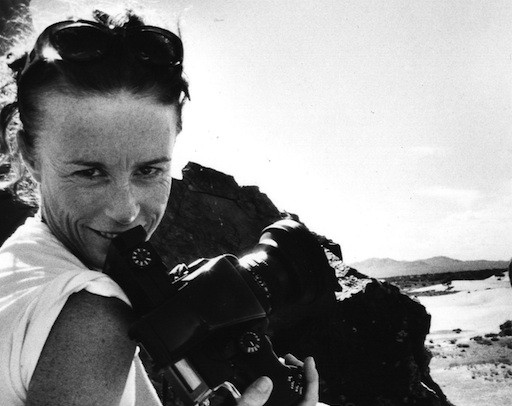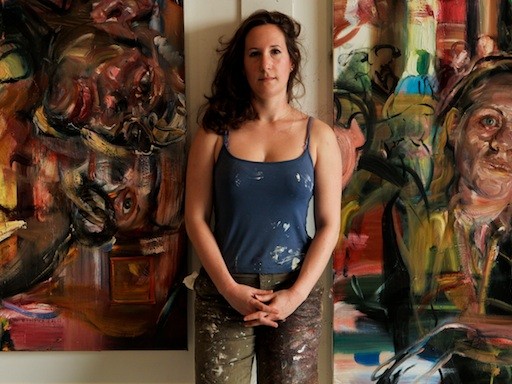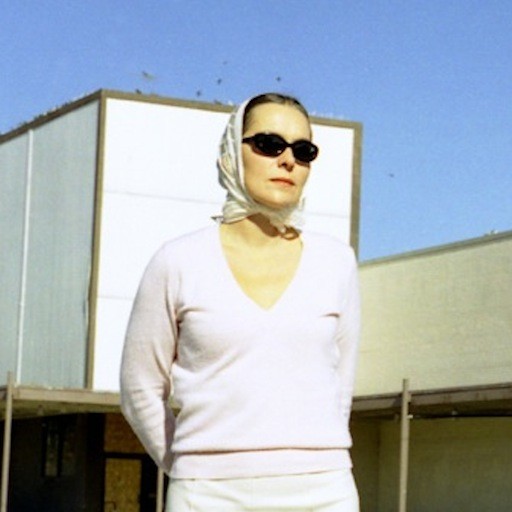Pamela Hanson is known as one of the first female photographers to work in the fashion industry, creating iconic images of women for magazines including Vogue, Glamour, Vanity Fair, Elle, Jane, and Allure. We spoke to her about how she broke into fashion photography, her influences, and how being a woman allowed her to build a special bond with her models that opened up possibilities for incredible pictures.
Each of your photos is like a tableau, and unlike with most fashion photography where the models are just posing, you like to tell stories. Where do you find your inspiration?
I am definitely inspired by movies—my work is very cinematic. The French New Wave is a big inspiration, but any moving image can strike me at any time. People also inspire me. I create connections and personal relationships with the models rather than treating then as clothes hangers. My first jobs were reportage and portraits.
Do you begin creating a photograph with a concept in mind, an idea?
The clothes or the product come first. Then I try to find an idea that will fit. The casting is very important because I have to empathize with the models.
Even if creating a fashion photograph is a team effort with the client and the model, is it the photographer who, in the end, dictates how the hair and the makeup will look, for example?
Fashion photography is a collaboration, and there is a lot of money involved in producing a photograph. You plan beforehand but you also work from what is in front of you. You have a set designer, a stylist, assistants—it’s a mini-version of directing a movie. I just shot in an apartment that was turned into an office for a “sexy secretary” story. A lot goes into pre-production. The team works together and everyone has an idea of how they want the final product to look like. A lot of egos are involved and you have to be very diplomatic.
So there is no freedom?
There is freedom but you still have to make it happen in a certain way. I have a definite point of view in relation to clothes. It makes a difference if I don’t like the clothes, but the client still has to be satisfied. It’s a challenge. When you wish for a black turtleneck because you know it will look better and you get an orange one instead, this is when you realize you are on a job. It’s a big responsibility.
You do commercial work or just editorial?
I have to pay the rent! I just did a big job for Gillette. There is always something great to get from any shoot. Sometimes a commercial job is more fun than editorial because it’s more challenging. It’s very fulfilling when you satisfy a client. There is a lot of pressure and a lot of expectation; you are hired for a reason, for what you can deliver. But just commercial photography can become pretty vacant.
How do you balance all that?
I am always involved in personal projects. Right now I am working on a nude book and shooting the photos when I have the time. It allows me to create exactly the images I want. I am inspired by Cybill Shepherd in The Last Picture Show and transforming her into a Helmut Newton-esque character.
How did you first come to photography?
Growing up I always carried a camera with me. At my last high school reunion I was reminded that I shot all of our year-end books.
How did you get into fashion?
I wanted to be a curator and went to art school, where I learned a lot about painting and art history. Then I turned to photography, but fine-art photography had a contrived quality that did not fit my personality. It was too analytical. I met [celebrated Vogue photographer] Arthur Elgort who promised to hire me as an assistant if I moved to Paris. For a while I worked as his driver, doing odd jobs. And started shooting, mainly lingerie. I didn’t understand clothes yet. And then I was at the right place at the right time and I got a “real” job.
Do you have the same excitement about taking pictures today as you did when you started?
Yes! I just love taking photographs. I take pictures all the time. People and their personalities really interest me. It’s so much fun. And over the years I have gotten to love fashion.
Why do you take non-fashion photographs?
It’s a visual diary of my life—I am capturing moments in time. It gives me enormous pleasure to look back at these photographs, like watching a film of my own life. It’s super-emotional.
That reminds me of Henri Cartier-Bresson, who declared that a photograph should be about capturing “the decisive moment.”
I actually met him once! His photographs were probably more decisive than mine…. I am a kind of voyeur: the camera lies between me and what’s happening out there, and I record the passage of time as it happens.
Who are your photographic heroes?
Helmut Newton, Man Ray, and Lartigue. Also Irving Penn, Richard Avedon, Arthur Elgort, Annie Leibovitz, Peter Lindbergh. And I love the work of Thomas Struth and Arnold Odermatt, the Swiss police photographer—it’s just fantastic how he turns his subject matter into sculptures. But my true hero is Helmut. I love his images so specifically; I like his humor, energy, personality, and feeling. I knew him pretty well and he had an immense respect for his clients, which is also a quality I admire a lot in this business.
Do you have any advice for young photographers?
You have to love to take pictures and, whatever you do, keep your own vision! Don’t forget that trends come and go and you have to trust your own point of view. You don’t have to please everybody. It’s important to understand what you are good at and stick to it. This is one reason I admire Annie Leibovitz so much—she can be good or less good, but she is always great because she is always true to herself.
Photography has changed so much in recent years, mainly going from analog to digital. How did you adjust?
If I love what I see I don’t care how it’s done because I just love images. These days there is no more time to wait for a film to develop, it seems that everyone needs the photos right away! And film is expensive and almost prohibitive for young photographers.
As an artist, what do you think your legacy will be?
At the beginning I was one of the few woman shooting fashion and shooting in a way that no one else was at the time. I think I established a relationship with the models that did not include any of the sexual stuff. It was and is a relationship of trust, because I am a girl myself and they can relate to me. We all respond differently to a woman and to a man. These feelings are mirrored in my photographs. I moved to Paris as a young adult where my roommates were models. I photographed them in a very personal way. That intimacy struck for life.
Meet the Artist
Pamela Hanson on Her Seductive Photography



























